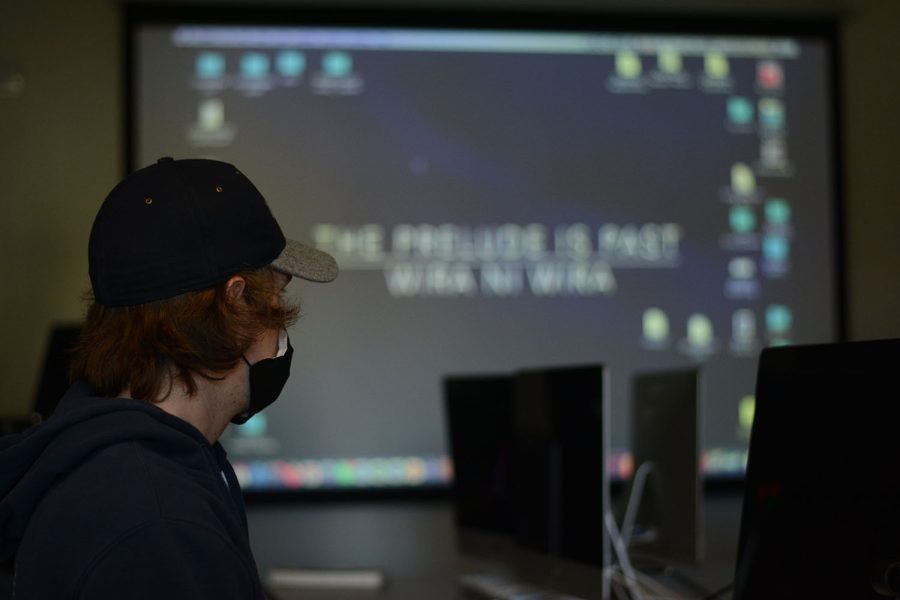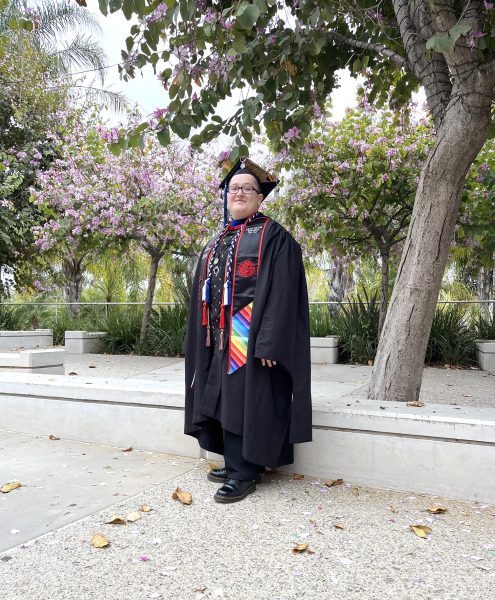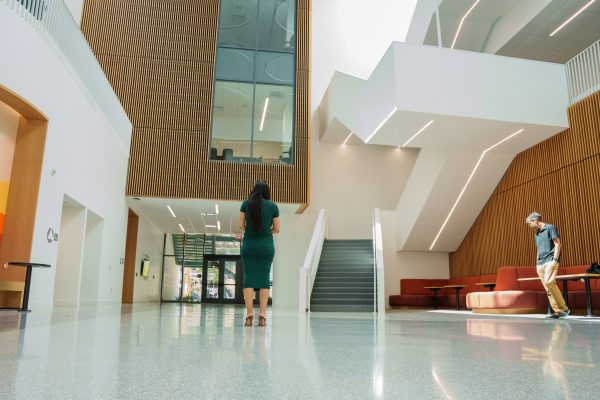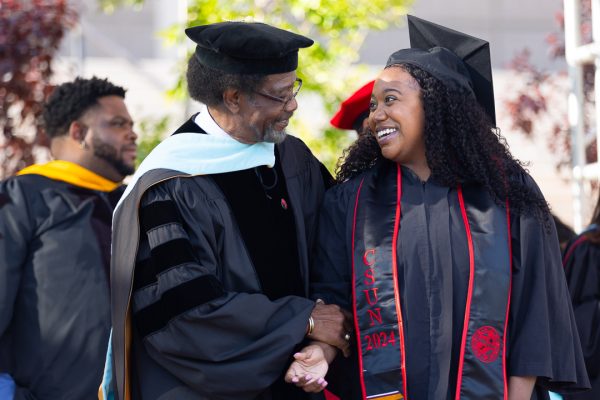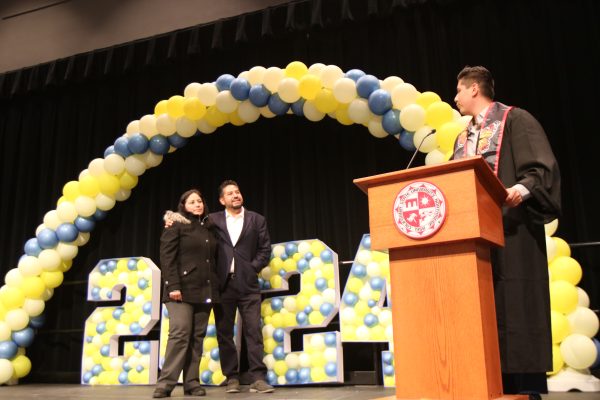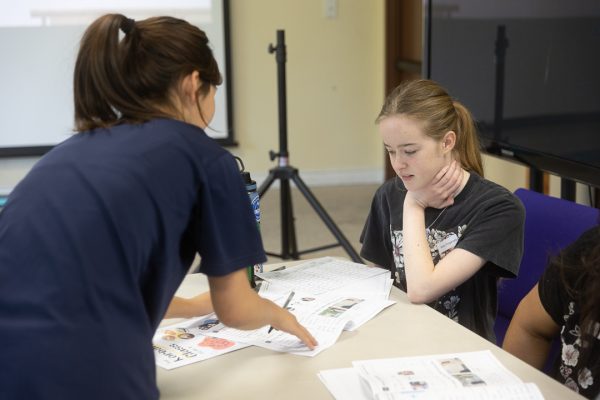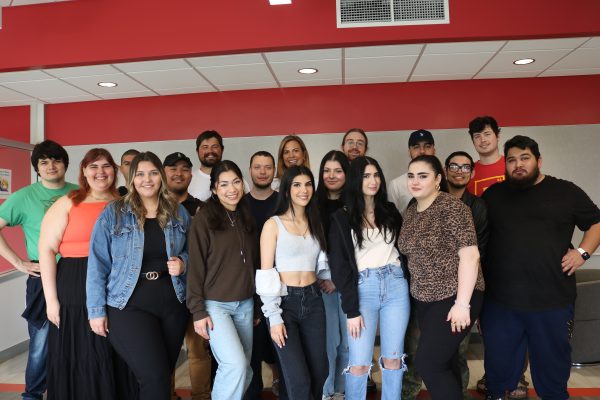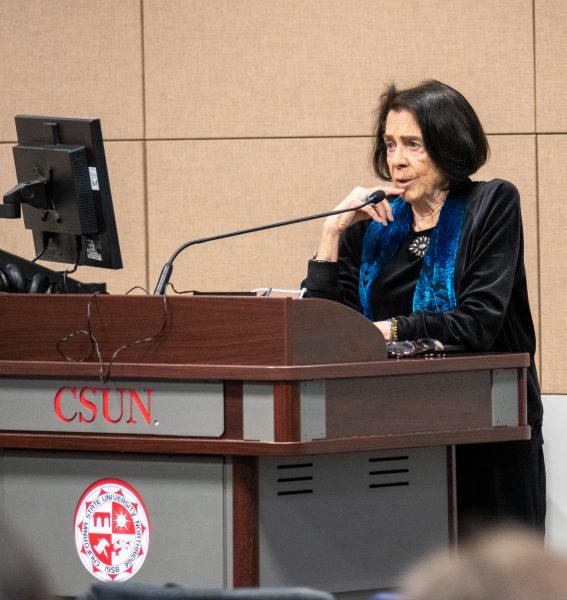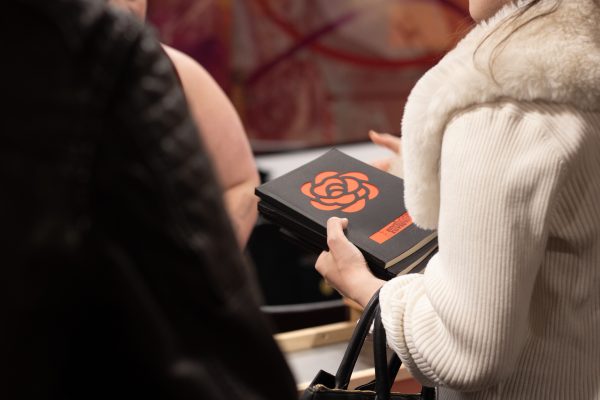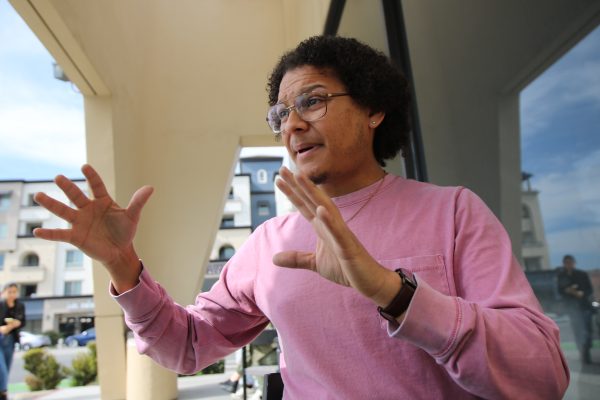CSUN reevaluates learning options amid pandemic
Jack Titter attends an in-person sports journalism class on Feb. 8, 2022, in Northridge, Calif.
February 21, 2022
At CSUN, a student-run petition through Change.org with over 5,000 signatures is one way students are trying to make sure their voices and perspectives are taken into account when school administrators make their decisions.
The pandemic has made CSUN one of many colleges and universities across the country that have students advocating for a hybrid option for their learning. The rise in COVID-19 cases due to the omicron variant has made some students worried about the return to on-campus learning. Also, some students have realized over the last two years that the online option is a more convenient way for them to learn.
Just this past week, students at UCLA staged a sit-in protest advocating for a hybrid option to be made available to students. The students protesting were advocating for the rights of students who are disabled, immunocompromised and/or have underlying health conditions, which may put them at a higher risk of catching COVID-19 and experiencing strong symptoms when returning to campus for the spring 2022 semester.
The hybrid model allows students flexibility when it comes to participating in class. Students who wish to appear in person can go to their designated classrooms, while students who prefer to learn from home can connect to the class online through a video feed.
Chase Baker, a graduate assistant and master’s candidate within the biology department, is one of the students advocating for a hybrid model to be made available at CSUN. Baker started the instagram page ResistCSUN, which advocates for universal access to education through a hybrid learning option.
“I could see that there was a need for students to organize and voice their opinions, and so I put together the tools for them to do that,” Baker said.
Beyond being a graduate assistant at CSUN, Baker is also a professor at Casa Loma College, a private medical school in Van Nuys. Baker said that the idea for him to start the page actually came from his students, who had voiced their concerns about returning to campus through the messaging platform Discord.
“It started about two weeks ago when I first saw the petition,” said Baker. “I kind of felt it was my responsibility that, since they’re opening up to me and I’m kind of a mentor to them, that I should at least give them tools they need to have their voices heard.”
Though some advocates for an alternative learning option are requesting a total move back to online instruction, Baker argues that schools offering a hybrid model would be the most practical solution because it would benefit students who want to return to campus and students that would prefer an online option.
“A hybrid setting should be the option that we have for students who are not worried at all, and with the professors who are not worried,” said Baker. “But for classes where it’s just a lecture, I just don’t see the benefit of it.”
The Sundial conducted a survey through Instagram and Twitter that asked whether participants felt that CSUN should resume in-person or online learning this February.
CSUN’s enrollment numbers for the 2021-2022 academic year were reported to be 38,551 total students, with 32,214 students enrolled with full-time status.
From a total of 56 participants on Twitter, 52% said that they preferred the spring semester to remain online while 41% preferred an in-person semester, with 7% saying that they were undecided. From a total of 311 participants on Instagram, 47% wanted in-person classes during the spring semester, while 53% said that they would prefer to remain online.
The total response pool accounts for roughly 1% of the total student body.
Among those participants is Gabriela Torres, a third-year psychology student who returned back to campus last week for the first time this semester. Torres has six classes, three of which are in person. Although she admitted she was excited to come back, she also said that she was nervous about how the school would look with everyone returning. She found her nervousness to be well-founded when she noticed her classes weren’t very socially distanced.
“Classes look how they used to be,” Torres said. “The dance class I take is pretty well spread out because the room is big, but the strength training class I’m taking is not socially distanced at all. We have to work in groups of three, so it’s hard to socially distance. We all just make sure we keep our masks on.”
Torres felt confident that she was taking every personal measure possible to keep herself safe. She made sure to keep up with her vaccination schedule and keep her mask on at all times. However, Torres said that she realizes she can only do so much, and that part of her safety relies on the cooperation of others on campus — something she hasn’t felt very confident in.
“I feel safe, but the environment doesn’t feel very safe,” Torres said. “There are areas that aren’t very socially distanced, and in certain places, especially in the library, a lot of people take their masks off and the staff aren’t very strict about that. I would say not all.”
The CSUN Matadors Forward COVID Dashboard reports that the vaccination rate for individuals coming to campus is 89.3% for students and 94.8% for faculty members.
The dashboard also reports that as of Feb. 14, roughly 43% of faculty members and 36% of the student body have self-reported to have received their booster shots. Not all members of faculty or students are yet eligible to receive a booster shot.
Because she feels that she can only do so much, Torres has joined many students in lobbying for a hybrid teaching model that gives students that aren’t in her position the option to feel comfortable and safe while in class.
“I understand that it might benefit some students to be in person, especially when it comes to mental health or being motivated in class,” Torres said. “But some people are unable to get the vaccine, some people are immunocompromised, [and] those people should have an option.”
One of Torres’ classes, an upper-division psychology course, has started to attempt to operate in a hybrid model.
However, some departments at CSUN have spoken about the challenges that come with pivoting toward hybrid learning.
Linda Bowen, chair of the journalism department, said that some of the department’s classes are currently operating in a hybrid setting. However, Bowen said that the hybrid model may not be practical for all of CSUN’s classes and departments.
“CSUN is not an online university,” Bowen said. “Some faculty really love it, but other faculty are struggling with it.”
Elizabeth Adams, associate vice president of academic and undergraduate studies, also talked about the possibility of scheduled in-person classes operating in a hybrid manner by the Feb. 14 return date. Adams said that part of that decision would have to come from the CSUN faculty.
“That is up to the faculty member,” said Adams. “So if a faculty member is willing to work with the students on having more hybrid classes, they can. But generally speaking, the courses that are scheduled to be on campus are going to meet on campus.”
CSUN Vice Provost Matthew Cahn talked about how administrations across many colleges and universities have been responsive to the national conversation surrounding hybrid learning in the midst of the pandemic. Cahn said that the pandemic forcing campuses to close in the spring of 2020 has allowed many schools to assess what classes would be practical to switch to an online setting.
Cahn said that the administration is working to figure out what the right ratio of in-person, online and hybrid classes should be. CSUN is currently offering twice the number of online classes than it did pre-pandemic.
“We don’t know whether that’s the right ratio,” Cahn said. “So we will be starting this semester really initiating conversations with students, with faculty, with the community: what makes the most sense?”
